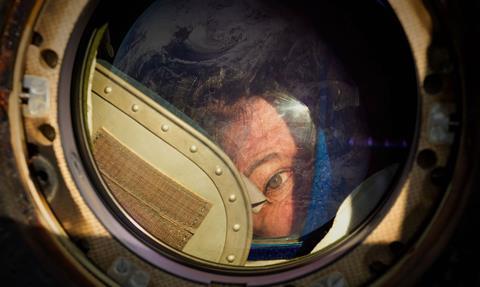Documentary explores the intense psychological preparation of NASA’s Mars-bound astronauts

Dir: Ido Mizrahy. Israel/Canada. 2023. 87mins
If there’s one thing that science-fiction films have taught us, it’s that trips to deep space have a tendency to end badly – frequently due to the psychological breakdown of the crew. Ido Mizrahy’s eye-opening, accessible documentary shows this is a very real-world concern for NASA and other space agencies, as plans are made to send human beings to Mars within the next 10 years.
Succeeds in creating a real sense of the efforts it will take to get ‘soft, squishy humans’ to Mars
While Mizrahy’s film works best on the solid ground of things that have already happened rather than the speculative science towards the film’s end, its themes of social isolation and the need to stay connected are likely to strike an immediate chord with global audiences in the wake of the pandemic. It is currently blazing a trail at festivals, featuring in Thessaloniki and going on to CPH: Dox following its Sundance premiere.
It takes about three days to get a human to the Moon; in contrast, a trip to Mars is expected to last three years. That’s a long time in a confined space with a small number of people, and something that NASA is trying to prepare its crews for for ahead of time. As NASA operational psychologist Dr Al Holland explains, he wasn’t just brought in to help select those astronauts he believes are best suited for this mission, but to ‘game’ the situation so that problems are anticipated and solutions found before they happen.
While Holland and fellow psychologist Dr Jack Stuster provide the bulk of the science for Mizrahy’s film, the director also approaches the subject from a number of different angles, including interviews with former International Space Station (ISS) astronaut Cady Coleman and her family. Coleman spent six months on the ISS in 2010 when her son Jamey was 10; something that required three years of preparation. The team, along with Cady’s husband Josh Simpson, talk retrospectively about the experience, while Mizrahy also has extensive access to the real-time conversations the family had while she was up in space. Anyone who ever had an important video call with loved ones drop during the Covid-19 lockdown will feel a pang of familiarity, as Coleman’s contact with home proves glitchy at awkward moments.
Neat parallels about the importance of connection with loved ones are illustrated by footage of the Chilean miners who became trapped underground in 2010 – a situation NASA was called upon to help. As Holland emotionally recalls the work it took to keep the families and miners connected, it’s a reminder of how much pressure is on him, too.
Pressure, in general, is part of the issue. The psychologists articulate how the refusal of the early astronauts to admit to human frailties has become culturally embedded in ways that are less than helpful for extended time in space. This is emphasised by footage from the ISS which shows the level of surveillance the astronauts are constantly under, all the time fearful that a wrong move might see them subsequently grounded.
There’s also a nod to the ‘crazy experience’ of rocket launches, where astronauts essentialy invite their family and friends to watch them undertake the most dangerous part of their mission – as one onlooker puts it, “my spouse is on top of a ball of fire!”. Ramachandra Borcar’s scoring is just insistent enough to add to these tensions without proving a distraction.
Offering a connection to the Mars mission, meanwhile, is Kayla Barron – one of 18 astronauts selected for the Artemis Programme, which aims to send humans to the Moon and then on to Mars – and her husband Tom. Yet a section about a Mars simulation feels more impactful in what it reveals about human nature than how it fits into the greater scheme of the Artemis Programme. And a speculative section towards the film’s end involving an AI robot called CIMON about the possibility that virtual reality may help keep people connected, along with the potential for ‘human hibernation’, feel rather more sketchy, as if Mizrahy couldn’t resist going down every rabbithole. Still, even if a bit less would perhaps have been more, the film succeeds in creating a real sense of the efforts it will take to get ‘soft, squishy humans’ to Mars – a journey that will take way more than a rocket.
Production companies: Restless Pictures
International sales: Autlook Film Sales, Jason Resnick jason@autlooksales.com
Producers: Nir Sa’ar, Ido Mizrahy, Paul Cadieux
Screenplay: Ido Mizrahy, Nir Sa’ar
Cinematography: Boaz Freund
Editing: Anouk Deschenes
Music: Ramachandra Borcar






















